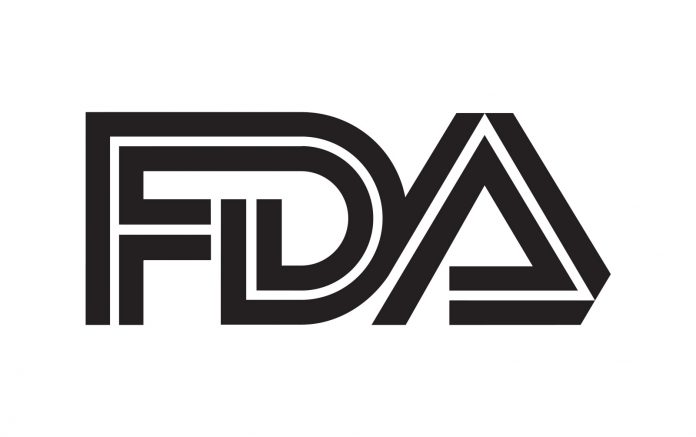By Erik MacLaren, PhD
Posted: August 19, 2020
The U.S. Food and Drug Administration (FDA) has granted accelerated approval to Merck’s immune checkpoint inhibitor pembrolizumab, adding a new tissue-agnostic indication for patients, including children, who have solid tumors with a tumor mutational burden (TMB) of 10 or more mutations per megabase of DNA.1 The new indication would potentially apply to patients who have unresectable or metastatic solid tumors that bear this biomarker and whose disease has progressed after prior treatment but are without alternative treatment options.
Pembrolizumab is a therapeutic antibody targeting PD-1, and this new approval is the second tissue-agnostic approval for this drug. In 2017, pembrolizumab was approved for treating solid tumors with high microsatellite instability (MSI-H) or that deficiencies in DNA mismatch repair (dMMR), and this was the first FDA approval for a cancer treatment based on the presence of a particular biomarker rather than on the tissue of origin.2 The current approval to use TMB status as a biomarker is based on the same biologic rationale: tumors with higher rates of mutations are more likely to produce neoantigens, making them more immunogenic and, therefore, more likely to respond to checkpoint inhibition. Tumors with TMB-high (TMB-H) status are also more common than those that are MSI-H or dMMR, so an approval would expand the population of patients for whom pembrolizumab is available. In the press release announcing the original FDA application, Scot Ebbinghaus, MD, vice president of clinical research at Merck Research Laboratories, said, “From the start, biomarker research has been a critical aspect of our clinical program evaluating Keytruda monotherapy. TMB has been an area of scientific interest to help identify patients most likely to benefit from Keytruda.”3
Like the previous approval for use in patients with tumors that are MSI-H or dMMR, the current decision is based on interim data from the phase II KEYNOTE-158 trial, which were presented at the European Society for Medical Oncology Congress 2019, in Barcelona, Spain, by Aurelien Marabelle, MD, PhD, of the Institute Gustave Roussy, in Villejuif, France.4 This trial has a basket design and includes patients with either anal, biliary, cervical, endometrial, salivary, thyroid, or vulvar carcinoma, mesothelioma, a neuroendocrine tumor, or SCLC; an ECOG performance status of 0 or 1; and disease progression or intolerance with at least one previous standard therapy. Patients were excluded if they had prior treatment with checkpoint inhibitors, including antibodies targeting PD-1, PD-L1, or PD-L2. All patients received pembrolizumab as a 200-mg infusion every 3 weeks. Using the FDA-approved FoundationOne CDx assay, the investigators identified 120 of 1,032 patients (15.9%) whose tumors were TMB-H, including 15 who were already known to be MSI-H.
Dr. Marabelle and his colleagues reported an objective response rate (ORR) of 28.3% (95% CI, [21.5%–40.4%]) among all patients with TMB-H tumors, including 24.8% (16.9%–34.1%) of those without MSI-H status, whereas the ORR in patients with tumors having less than 10 mutations per megabase (TMB-low; TMB-L) was 6.5% (4.7%–8.7%). Survival was similar regardless of TMB status. The median PFS was 2.1 months (95%CI, 2.1-3.7) in the TMB-H group and 2.1 months (2.1-2.3) in TMB-L, while the median OS was 11.1 months (8.1–16.1) in patients with TMB-H tumors and 13.3 months (11.5–14.8) in the TMB-L group. Finally, the investigators reported that the safety profile for pembrolizumab in this population was consistent with previous studies.
Clinically, it is important to note that unlike MSI-H and dMMR status, TMB is a continuous, quantitative biomarker, and it is, therefore, of critical importance to determine the appropriate threshold for defining TMB-H and whether that threshold is the same across tumor types. The gold standard for accurately determining the density of mutations in the genome is whole-exome sequencing; however, such testing is not practical for processing many patient samples, so most commercial and proprietary platforms use a targeted panel of genes instead to estimate TMB. These various platforms are not standardized in terms of the targets examined and can produce substantially different results,4 so the day after the FDA announced its decision on pembrolizumab, it approved the FoundationOne CDx assay as a companion diagnostic for the drug.
Checkpoint inhibition is not equally effective in all tumor types, but this issue has not been fully explored by researchers, and tissue of origin may still be important in patient selection. In reaction to the original application by Merck, Axel Grothey, MD, of the West Cancer Center at the University of Tennessee, tweeted, “I am really not sure if that’s the right way forward. The predictive value of TMB for the activity of [immuno-oncology] agents varies quite a bit between tumor entities. This seems rushed and potentially misleading.”6
The variation in responses between specific tumor types was also seen in the analysis of MSI-H and dMMR tumors in KEYNOTE-158, and mean ORR ranged from 0.0% in patients with brain tumors to 57% in those with endometrial carcinoma. “Differences in point estimates among tumor types are to be expected when a limited number of patients per tumor type are enrolled in clinical trials,” said Steven Lemery, MD, director of the Division of Oncology 3 in the Office of Oncologic Diseases at the FDA’s Center for Drug Evaluation and Research in response to questions from the IASLC LCN. “Nevertheless, FDA will continue to assess treatment effects as more patients with different tumor types are treated to determine if labeling updates are needed.”
There are clear advantages to tissue-agnostic cancer treatments. Cancers are heterogeneous in nature, and tumors sharing the same tissue of origin or histology do not necessarily share the same underlying biology. Selecting patients by using biomarkers related to the mechanism of action of the therapeutic could help increase efficacy and safety by targeting patients most likely to have a response. The FDA has now issued four tissue-agnostic approvals since 2017 and it anticipates more applications as more drugs are targeted to specific biomarkers. ✦
References:
1. FDA approves pembrolizumab for adults and children with TMB-H solid tumors. News release. U.S. Food & Drug Administration. June 17, 2020. Accessed June 26, 2020. https://www.fda.gov/drugs/drug-approvals-and-databases/fda-approves-pembrolizumab-adults-and-children-tmb-h-solid-tumors.
2. FDA approves fi rst cancer treatment for any solid tumor with a specifi c genetic feature. News release. U.S. Food & Drug Administration. May 23, 2017. Accessed May 19, 2020. https://www.fda.gov/news-events/press-announcements/fda-approves-first-cancer-treatment-any-solid-tumor-specific-genetic-feature.
3. Merck receives priority review from FDA for second application for KEYTRUDA (pembrolizumab) based on biomarker, regardless of tumor type. News release. Merck. April 7, 2020. Accessed May 19, 2020. https://www.mrknewsroom.com/news-release/oncology-newsroom/merck-receives-priority-review-fda-second-application-keytruda-pembro.
4. Marabelle A, Fakih MG, Lopez J, et al. Association of tumour mutational burden with outcomes in patients with select advanced solid tumours treated with pembrolizumab in KEYNOTE-158. Ann Oncol. 2019;30(Suppl 5):v477-v478.
5. Merino DM, McShane LM, Fabrizio D, et al. Establishing guidelines to harmonize tumor mutational burden (TMB): in silico assessment of variation in TMB quantification across diagnostic platforms: phase I of the Friends of Cancer Research TMB Harmonization Project. J Immunother Cancer. 2020;8(1):e000147.
6. @agrothey. The predictive value of TMB for the activity of IO agents varies quite a bit between tumor entities. Th is seems rushed and potentially misleading. April 7, 2020. Accessed May 19, 2020. https://twitter.com/search?q=agrothey%20predictive%20value%20of%20TMB&src=typed_query.
A Closer Look

Medical Oncologist at The National Cancer Centre Singapore
ILCN Editorial Board Member
In addition to complexities surrounding accuracy of TMB estimation using targeted gene panels, there are numerous biologic and practical considerations. Not all mutations are created equal, and the relative importance of specific mutations or differing types of mutations, particularly across tumor types, remains unclear; this may not be wholly addressed in tumor agnostic estimations of TMB.1 The relationship between TMB and the presentation of tumor neoantigens, the proposed mechanism by which TMB is thought to predict for benefit to immune checkpoint blockade, may also vary significantly depending on tumor type. Furthermore, intra-tumoral heterogeneity and tumor evolution gives rise to practical considerations on the timing, site, and selection of archival or fresh tissue for TMB testing. As a new tissue agnostic biomarker entering the clinic, TMB will undoubtedly continue to generate significant debate. Well-designed studies to further clarify its role as a predictive biomarker are crucial. ✦
Reference:
1. Chan TA, Yarchoan M, Jaffee E, et al. Development of tumor mutation burden as an immunotherapy biomarker: utility for the oncology clinic. Ann Oncol. 2019;30(1):44-56.











